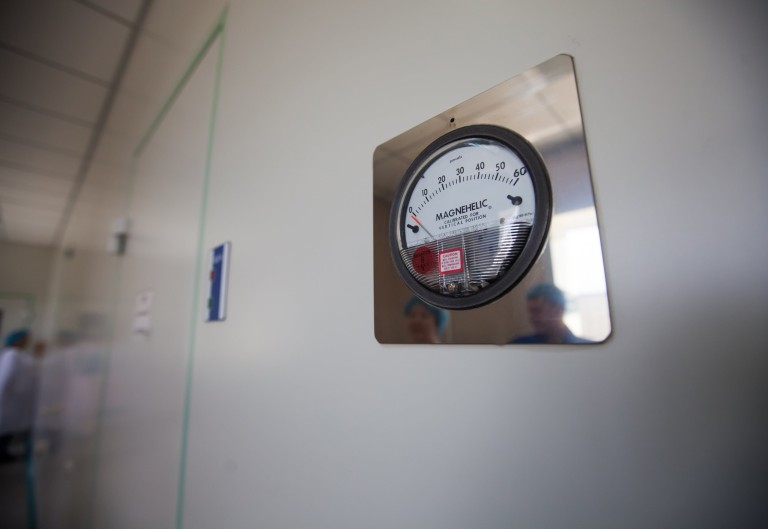
The pressure gauges installed onto primary engineering controls (PEC, such as biosafety cabinets or clean benches) aid in the assessment of proper function and troubleshooting when utilized properly. A pressure reading near where the reading was at the time of certification is important to check prior to using any PEC, however, it is important to understand that these monitors are for reference only and cannot be relied on as a direct correlation to airflow.
The reading on these gauges will continue to change over time. As a HEPA filter loads, the reading will increase while airflow decreases. If the unit is equipped with a prefilter upstream of the gauge reading location, the reading may drop as the pre filter loads with particulate while also reducing airflow. The same situation can arise when the front grill or paper catch of a BSC becomes blocked. Variations in humidity, absolute pressure, temperature, or voltage from the power grid can also cause small fluctuations in the readout on one of these devices from day to day or over time. It is due to these types of expected variations in airflow that PECs are tested on a recurring basis.
Variations in the reading of the pressure gauge inside a +/- 10% of the pressure noted on your certification report or sticker should not normally be of immediate concern. While this could be an indication of a change in the airflow, the specs used to certify PECs compensates for the normal changes that will likely occur between certification intervals. We call this “bubble” the performance envelope. The performance envelope is the result of testing with aerosolized biological organisms to determine at what airflow point unwanted contamination occurs. After the information from the biological testing is compiled, an acceptable range of airflows is chosen that is well within the functional parameters of the PEC.
As a HEPA filter continues to load with particulate over the years (or months), the pressure reading will continue to rise until the filter is replaced, at which point the reading will go back to something closer to where it was when the unit was new. Because of this, there is no acceptable range of reading on a PEC mounted pressure gauge, it is only for reference against previous readings at known airflows during certifications. Additionally, since there is no pass or fail range associated with a PEC mounted pressure gauge, there is no reason to calibrate them, as the accuracy of the reading has no bearing on the functionality of the unit being monitored.
For questions about information spelled out in the article, CONTACT US today to set up a consultation to discuss how TSS might be of service to your business or organization.

